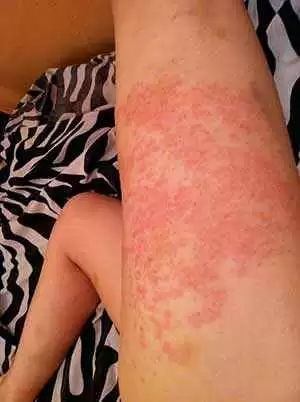Celiac.com 01/08/2008 - Scientists at the University of Finland have announced the discovery of a particular gene that is tied to the development of the celiac-associated skin disease dermatitis herpetiformis, which is the form of celiac disease found in a full 25% of all celiacs. The gene is called myosin IXB, and it is located on chromosome 19p13.
In addition to being connected with a higher risk of celiac disease in both Dutch and Spanish populations, the gene has been associated with a higher risk of inflammatory bowel disease, systemic lupus, erythmatosus, and rheumatoid arthritis, which means that myosin IXB is likely a shared risk factor in all of these disorders.
Celiac.com Sponsor (A12):
Researchers looked at nearly 500 Hungarian and Finnish families, plus another 270 patients and controls. What they found was a substantial linkage to chromosome 19p13 (LOD 3.76 P=0.00002) that lends great weight to the notion that this is a substantial risk factor. Other variants of the myosin IXB gene showed no connection with celiac disease, though they did show a small connection to dermatitis herpetiformis.
Both phenotypes show a significant connection indicating that the role meaning that there still may be a role being played by nearby genes. They are calling for more comprehensive genetic and functional studies to determine what the exact nature of the role the myosin IXB gene in both celiac disease and in dermatitis herpetiformis.
As more studies are conducted, and more data emerges, we are likely to get a much clearer genetic picture of both celiac disease and dermatitis herpetiformis. A clearer genetic picture will likely lead to new and novel approaches to treatment that permit much more effective targeting of treatment.
Journal of Med. Genet. 2007 Dec 12







Recommended Comments